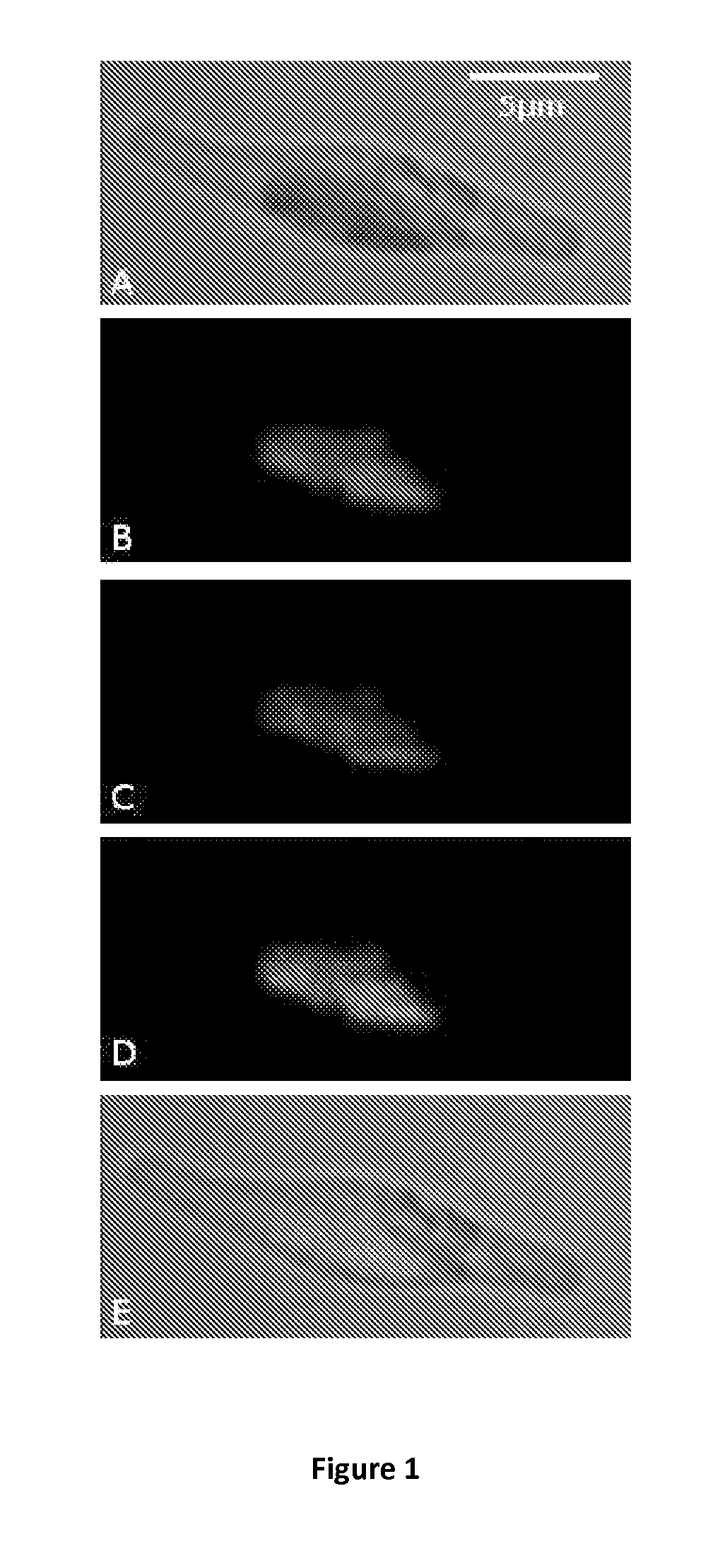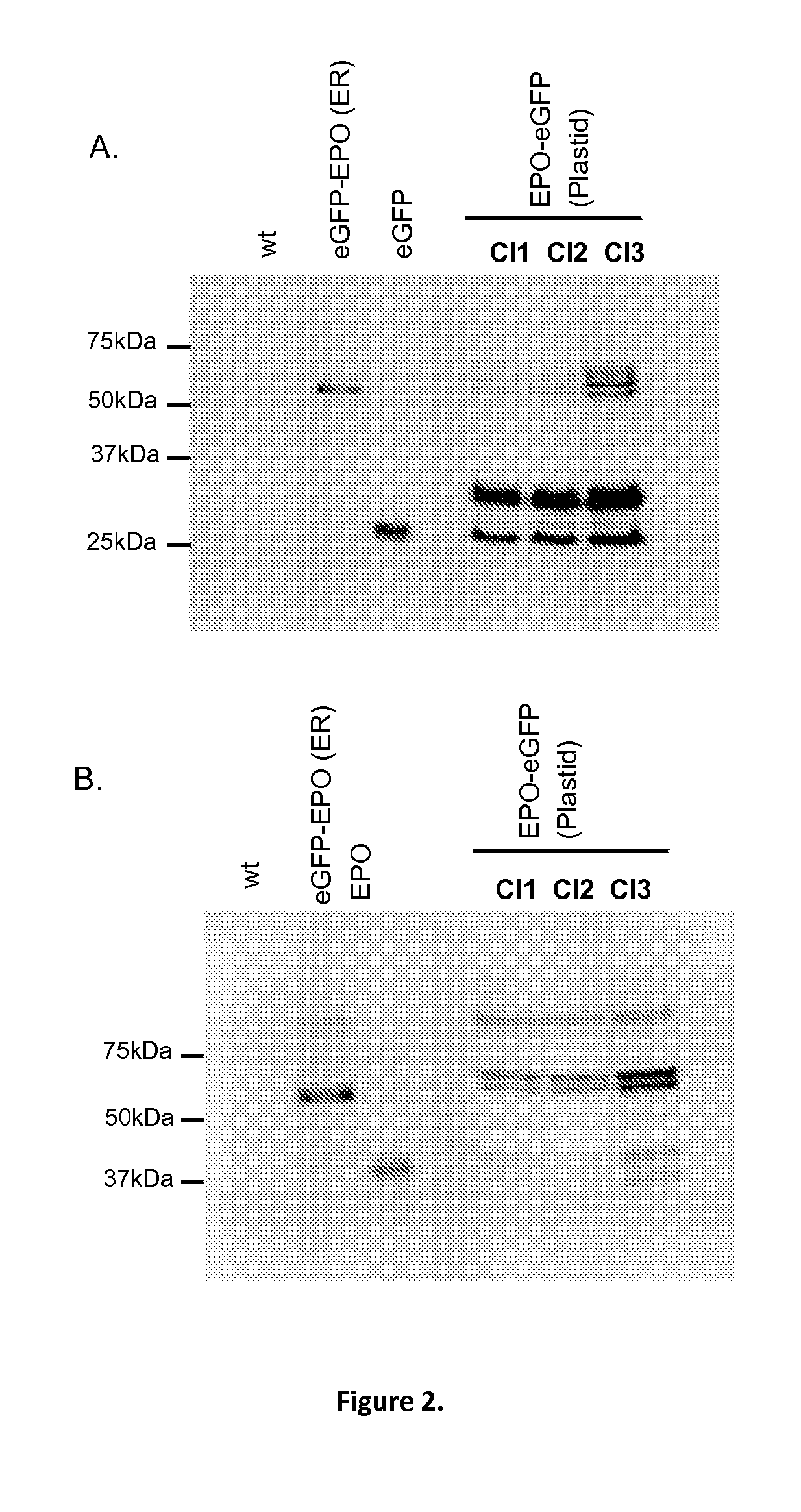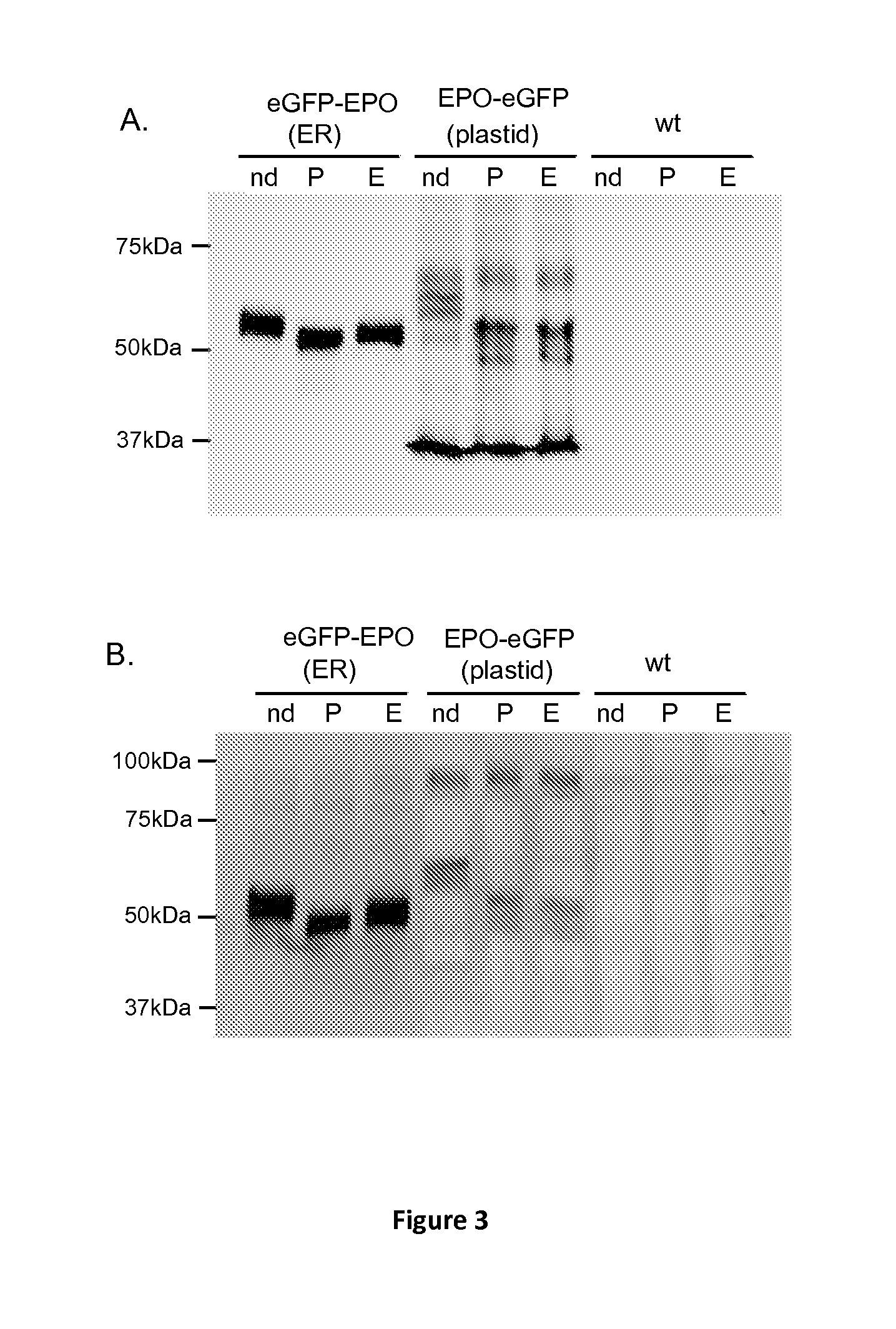Production of high mannose glycosylated proteins stored in the plastid of microalgae
a technology of glycosylated proteins and plastids, which is applied in the direction of carrier-bound/immobilised peptides, recombinant dna-technology, peptide sources, etc., can solve the problems of non-human cells using non-human cells, quality and regulatory issues in the production of recombinant drugs, background art does not teach or suggest any method for the production of glycoproteins
- Summary
- Abstract
- Description
- Claims
- Application Information
AI Technical Summary
Benefits of technology
Problems solved by technology
Method used
Image
Examples
example 1
Targeting of a Nuclear-Encoded Glycosylated Chimeric Protein into the Plastid of Phaeodactylum tricornutum
[0172]To test the ability of a nuclear-encoded protein to be glycosylated, targeted and stored into the plastid, Phaeodactylum tricornutum (P. tricornutum) was transformed with a plasmid containing a 54 amino acids bipartite topogenic signal sequence of the phosphoenolpyruvate / phosphate translocator (Tpt1) from P. tricornutum fused in-frame with a sequence coding for a chimeric protein composed of the mature murine erythropoietin (EPO) and the enhanced green fluorescent protein (eGFP) (SEQ ID No26). The chimeric protein is composed of 166 amino acids corresponding to the mature EPO protein lacking its native 26 amino acids signal peptide followed by the PreScission protease cleavage site (LEVLFQGP) and 239 amino acids corresponding to the green fluorescent protein. The chimeric protein obtained contains 3 potential N-glycosylation sites within the EPO sequence.
[0173]a) Standard...
example 2
Targeting of Nuclear-Encoded Human Lysosomal Enzyme into the Plastid of Phaeodactylum Tricornutum
[0209]The β-glucocerebrosidase (GBA) is an enzyme naturally targeted to the lysosomal compartments of human cells. Enzymatic deficiency leads to the accumulation of glucocerebroside in macrophages causing Gaucher's disease. Treatments include enzyme replacement therapy based on the delivery of intravenously injected recombinant β-glucocerebrosidase. The FDA-approved drug is produced in Chinese Hamster Ovary cells and modified by sequential deglycosylation of its carbohydrate side chains to expose alpha-mannosyl residues that mediate uptake of the therapeutic enzyme by surface mannose receptor expressed on target cells. Consequently, there is an industrial benefit to produce a recombinant β-glucocerebrosidase having naturally N-glycans with mannose-terminated structures.
[0210]Human β-glucocerebrosidase is expressed, targeted and stored into the plastidial stroma of P. tricornutum by mean...
example 3
Targeting of Nuclear-Encoded Viral Envelope Glycoprotein into the Plastid of Phaeodactylum tricornutum
[0230]The envelope spike of HIV contains various highly glycosylated proteins including gp120. Native N-linked glycans of gp120 are almost entirely oligomannose (Man5-9GlcNAc2) compared to the recombinant gp120 produced in the human cell line HEK293T which contains a majority of complex glycans. High-mannose glycans of gp120 (Man6-9GlcNAc2) are important determinant of antibodies recognition including 2G12, one of the most effective HIV neutralizing antibody. In the context of the viral vaccination design, the present invention thus confers a major advantage for the production of the envelope glycoprotein gp120 bearing high-mannose glycans, and used as antigens.
[0231]The viral envelope glycoprotein gp120 was expressed, targeted and stored into the plastidial stroma of P. tricornutum by means of the present invention. A plasmid containing a 55 amino acids bipartite topogenic signal ...
PUM
| Property | Measurement | Unit |
|---|---|---|
| Fraction | aaaaa | aaaaa |
| Fraction | aaaaa | aaaaa |
| Length | aaaaa | aaaaa |
Abstract
Description
Claims
Application Information
 Login to View More
Login to View More - R&D
- Intellectual Property
- Life Sciences
- Materials
- Tech Scout
- Unparalleled Data Quality
- Higher Quality Content
- 60% Fewer Hallucinations
Browse by: Latest US Patents, China's latest patents, Technical Efficacy Thesaurus, Application Domain, Technology Topic, Popular Technical Reports.
© 2025 PatSnap. All rights reserved.Legal|Privacy policy|Modern Slavery Act Transparency Statement|Sitemap|About US| Contact US: help@patsnap.com



